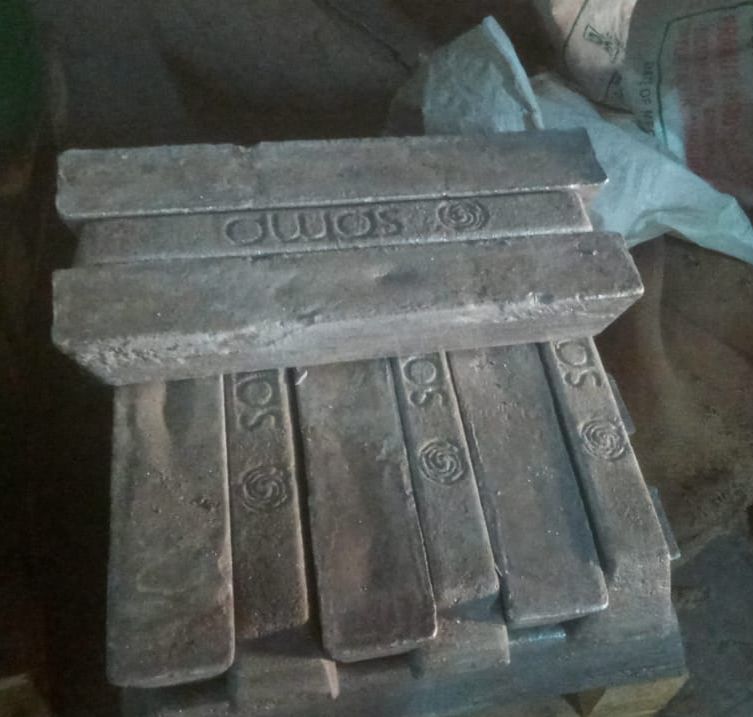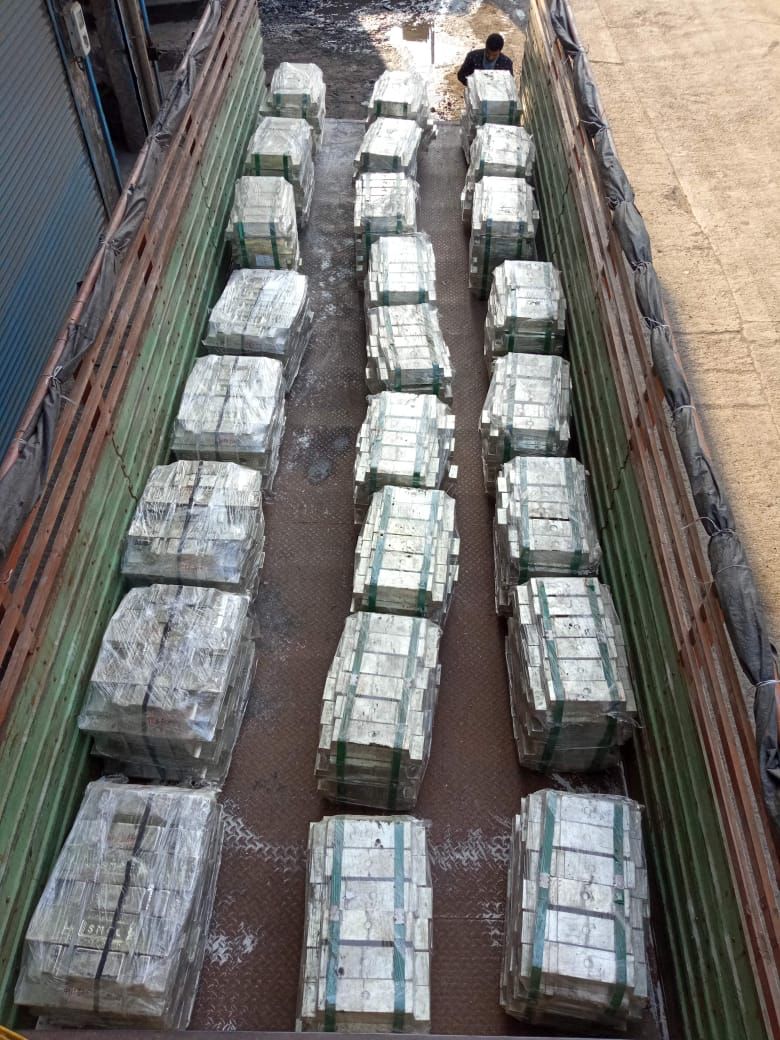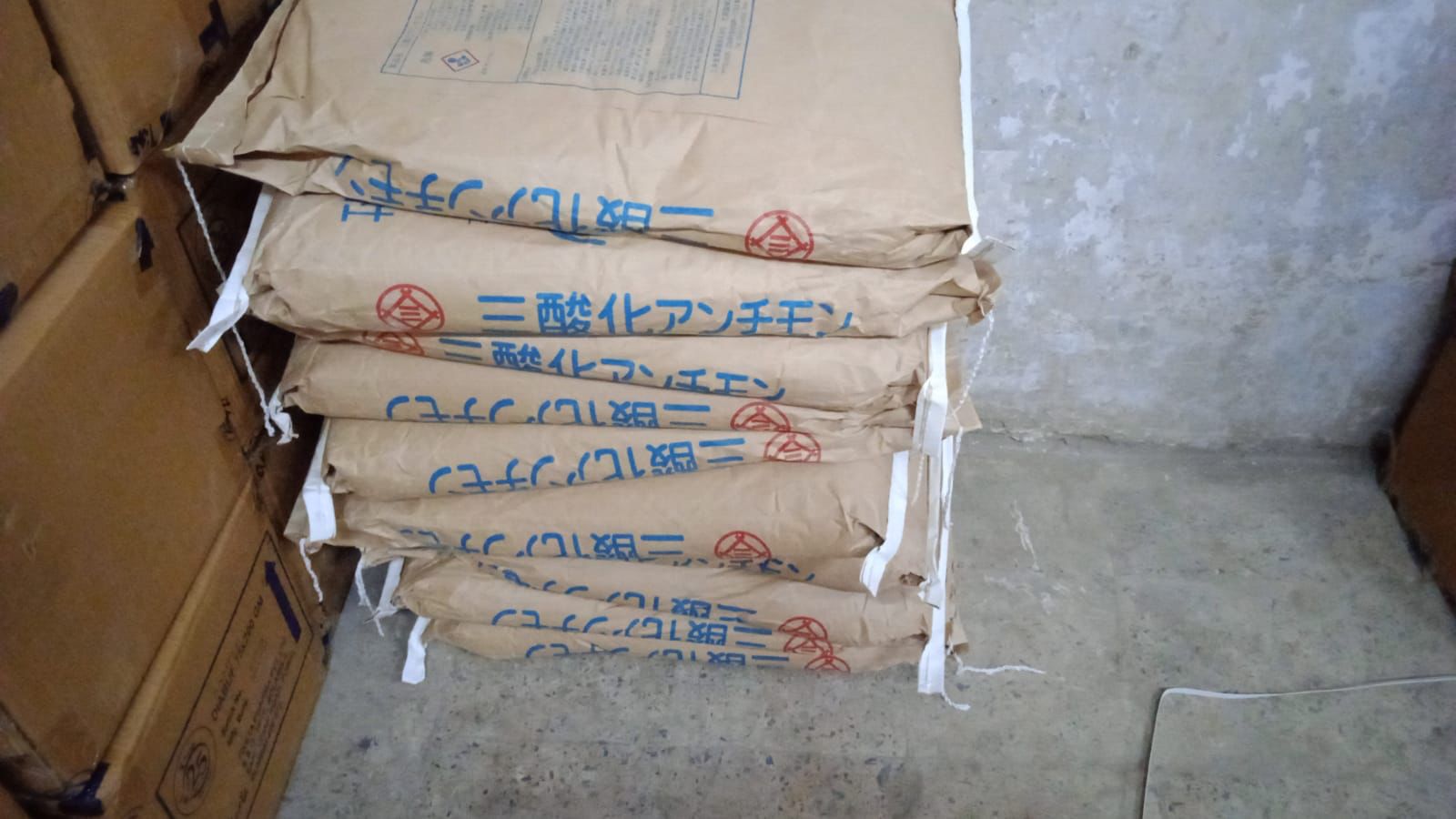Antimony is a chemical element with the symbol Sb (from Latin: stibium) and atomic number 51. A lustrous gray metalloid, it is found in nature mainly as the sulfide mineral stibnite (Sb2S3). Antimony compounds have been known since ancient times and were powdered for use as medicine and cosmetics, often known by the Arabic name Kohl. The earliest known description of the metal in the West was written in 1540 by Vannoccio Biringuccio. China is the largest producer of antimony and its compounds, with most production coming from the Xikuangshan Mine in Hunan. The industrial methods for refining antimony from stibnite are roasting followed by reduction with carbon, or direct reduction of stibnite with iron.
The largest applications for metallic antimony are in alloys with lead and tin, which have improved properties for solders, bullets, and plain bearings. It improves the rigidity of lead-alloy plates in lead–acid batteries. Antimony trioxide is a prominent additive for halogen-containing flame retardants. Antimony is used as a dopant in semiconductor devices.

Antimony Metal
Antimony is a chemical element with the symbol Sb and atomic number 51. It is a silvery-white, brittle, and lustrous metalloid that is widely used in various industries due to its unique properties. In this article, we will discuss the Antimony metal import market in India and its uses.
Overview of the Indian Antimony Market
The Indian Antimony market is relatively small but growing. The country has limited domestic production of Antimony, and most of its Antimony requirements are met through imports. The primary sources of Antimony imports are China, Russia, and Tajikistan.
Antimony Consumption in India
Antimony consumption in India is primarily driven by the battery industry. Antimony is used as an alloying element in lead-acid batteries, which are used in automobiles, UPS, and other applications.
Antimony Imports in India
India is a significant importer of Antimony, with the primary source of imports being China. Other sources of Antimony imports include Russia, Tajikistan, and Myanmar.
Antimony Prices in India
The prices of Antimony in India are primarily influenced by global supply and demand dynamics. The prices of Antimony are also influenced by factors such as exchange rates, transportation costs, and import duties.
Antimony Industry in India
The Antimony industry in India is small but growing, with a few companies engaged in the production of Antimony compounds. The industry is primarily focused on meeting the domestic demand for Antimony compounds.
Applications of Antimony in India
Antimony has a wide range of applications in India, including:
- Battery Industry: Antimony is used as an alloying element in lead-acid batteries, which are used in automobiles, UPS, and other applications.
- Flame retardants: Antimony compounds are used as flame retardants in various industries, including textiles, plastics, and electronics.
- Glass industry: Antimony compounds are used as a decolorizing agent in the glass industry.
- Chemicals: Antimony compounds are used in the manufacture of various chemicals, including pigments, ceramic glazes, and pharmaceuticals.


Antimony Export from India
India is not a significant exporter of Antimony, and the country's exports of Antimony compounds are relatively small. The primary destinations for Antimony exports from India are the United States, Europe, and Southeast Asia.
Challenges in the Indian Antimony Market
One of the main challenges facing the Indian Antimony market is the lack of domestic production of Antimony. The country has limited reserves of Antimony, and most of its requirements are met through imports. This makes the market vulnerable to fluctuations in global supply and demand dynamics and prices.
Government Initiatives in the Indian Antimony Market
The Indian government has taken several initiatives to promote the growth of the Antimony industry in the country. These include:
- Financial support for research and development in the Antimony industry.
- Promotion of public-private partnerships to develop the Antimony industry.
- Establishment of special economic zones to attract foreign investment in the Antimony industry.
Future Outlook for the Indian Antimony Market
The Indian Antimony market is expected to grow in the coming years, driven by the increasing demand for Antimony in various industries. The growth of the battery industry is expected to be a key driver of Antimony demand in the country.
Conclusion
The Indian Antimony market is a small but growing market, with significant potential for growth in the coming years. While the country has limited domestic production of Antimony, it has a growing demand for Antimony in various industries. The government has taken several initiatives to promote the growth of the Antimony industry in the country, and the future outlook for the market is positive.

